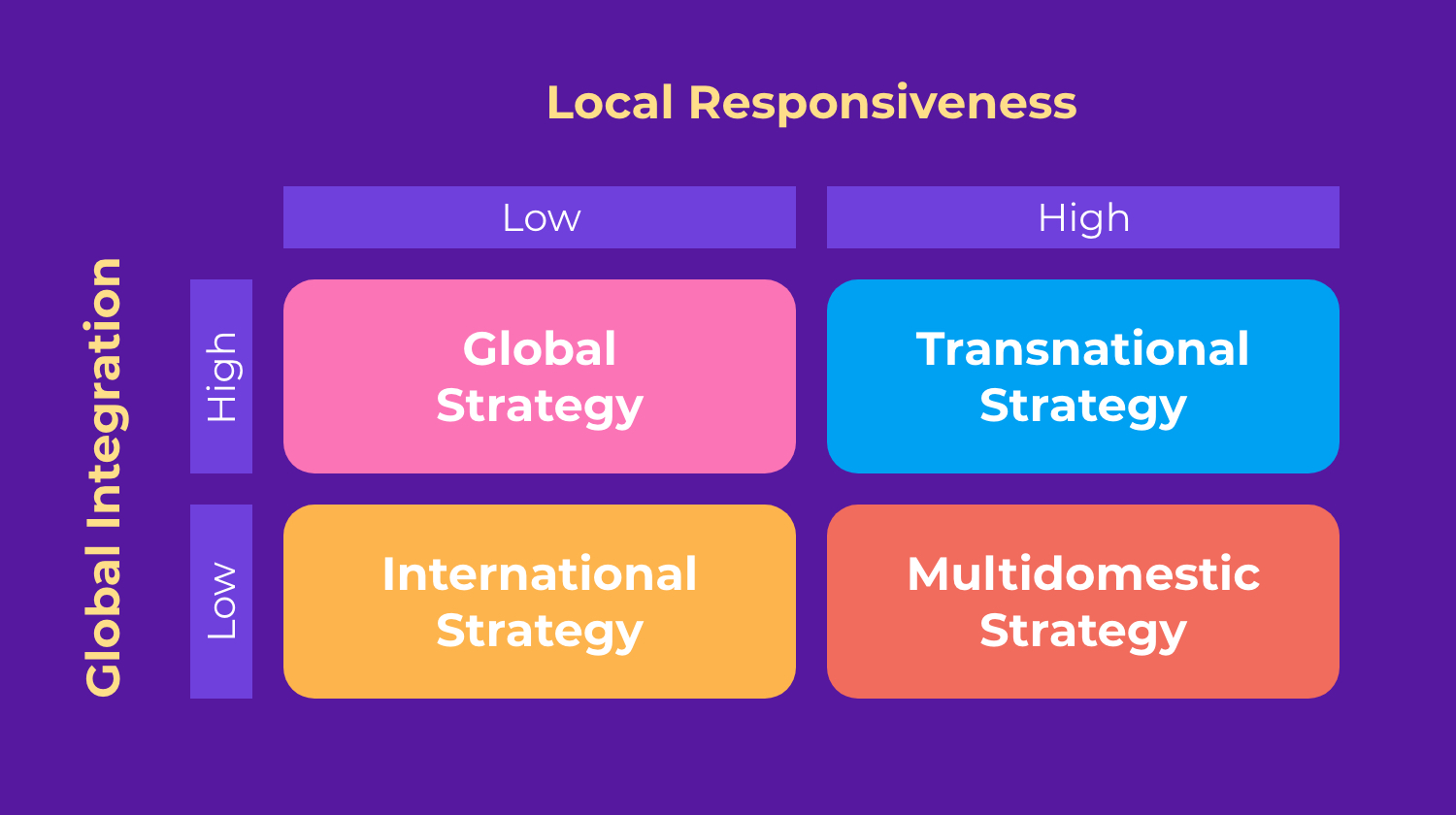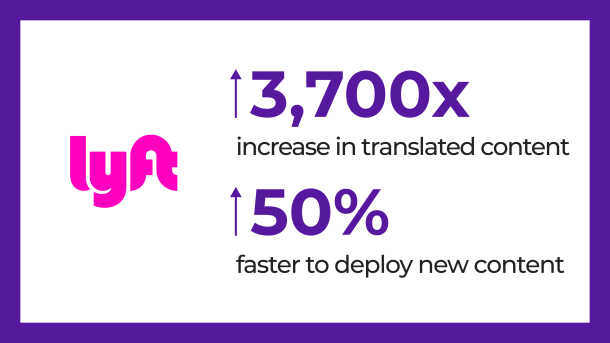Have you ever traveled to another country and took a peek inside a grocery store or department store? While the layout may be similar — produce here, canned goods there — chances are, you’ll see a completely different set of brands than you’d find in your home country. You may recognize some global names like Red Bull, Moet & Chandon, Goya, or Barilla, but you’re more likely to see a set of regional and local brands not found elsewhere.
But here’s the secret: Many of those regional and local brands are actually global ones. They may be part of a parent company employing a multi-domestic strategy as their international expansion model. Here’s what that entails.
What is a multi-domestic strategy?
When businesses use entirely different sales tactics, marketing strategies, and product portfolios based on the specific countries they’re operating in, they employ a multi-domestic strategy. Rather than one global brand, there are many smaller, country-specific brands tailored to local tastes and customers.
Global brands have two factors to play with when it comes to their international expansion. They can choose a model that’s more globally focused (one overarching brand based in your home country, with little to no changes for different markets) or one that’s more locally responsive (serving specific local market needs, tastes, and preferences).

Contrast that with other types of international strategies, like:
- International business strategy: Usually the first type of international expansion a business undergoes, this strategy focuses on imports and exports, keeping most of their operations in their home country and using their region or country of origin as part of the appeal. Wine and other luxury goods are a great example of this.
- Global strategy: This strategy focuses on one global brand with very few changes in colors or messaging. Brands like Apple or Google do this well — they’re instantly recognized in any country, with very few differences between domestic and other markets.
- Transnational strategy: Transnational businesses operate with a central or head office in one country that coordinates local subsidiaries in international markets. This organizational structure means that there is one overarching brand and center of operations that determine overall decision-making and supply chain management, harnessing the power of scale. This is the “goldilocks” of the different international expansion strategies available and a prevalent approach for businesses like McDonald’s, Coca-Cola, and more.
Multidomestic strategies drive a local-first approach
A multi-domestic strategy focuses on local responsiveness over global standardization, making it the most localized of the different models available. This is a true “local-first” approach that completely revamps the product, messaging, go-to-market strategy, and customer support based on the market.
In practice, this often looks like one parent company that may operate with a transnational strategy or a global strategy but smaller regional brands that deliver specific needs within that target market. Depending on the business, this can be with its own set of operations — a 100% local team or office, for example — or a mix of local and company-wide resources in strategic business units.
Choosing a multi-domestic strategy gives you several advantages:
- Highly localized products and services guarantee to match the local product-market fit and gain local competitive advantage for deeper market penetration
- Operating in foreign markets gives you easier access to local market advantages, like labor, shipping lanes, and natural resources.
- Financially, it looks more like a portfolio of separate business units, giving you transparent control over which investments are doing well and which operations should scale down as they perform.
- Because of this, companies can more easily expand through mergers and acquisitions in foreign markets, rather than starting from scratch, fitting new brands into the parent company.
However, the greatest challenge for a multi-domestic approach is that it hinges on your ability to know your customer preferences completely. If you’re going to fundamentally change your product, marketing, branding, and model per market, you have to be confident in that market and your ability to serve a niche within it.
Decentralizing decisions from a corporate model into local subsidiaries means you may be juggling many different teams that fundamentally do the same thing within different regions or markets. You’re essentially spinning up separate companies within each country (sometimes called Green-Field Investment, losing some of the advantages from economies of scale.
High local responsiveness requires a strong localization program
To be successful in this model, you must invest in a strong localization program. Localization is the process of adapting your brand to another market, including your content, imagery, website, packaging, mobile app, documents, and software, depending on your business. This process makes it possible for your product and services to better resonate with customers in a foreign market, so everything feels like it was made just for them.
When deciding where to buy, 56% of e-commerce customers say having a website in their language is more vital than price. Investigating the proper processes for efficient translation, researching ways to automate those efforts, and building the right team for your business are other important factors before you even begin creating local subsidiaries as part of your multi-domestic model.
Implementing a localization program as the core of your international expansion strategy considers:
Language
Yes, you will need to translate your website, mobile application, packaging, and more as part of your localization efforts. But the real value of localization comes from taking the spirit of your marketing messaging and creating something new that feels like it’s made just for that market. That may mean incorporating specific pop culture references, slang, or rewriting the structure of an article so that it makes more sense for that market.
Imagery
When you enter a new market, you need to navigate a different set of cultural constructs, including symbols, colors, and other imagery that may no longer fit your brand in that market. Plus, you also have to contend with existing local competitors — if your top local competitor has the same brand colors, for example, you may want to choose something different to stand out better.
User interface
Foreign languages often expand text when compared to English. Take into account the entire user experience includes font sizes, displays, and layouts for vertical languages (often used for Asian countries, like Japan or China) or right-to-left languages like Arabic.
Payment processes and currencies
This often-overlooked logistic is essential when spinning up operations in a new market. Your website and e-commerce platform should be able to process local currencies and different types of payments based on the market, including credit card brands, bank types, and other popular payment methods like PayPal or Venmo.
5 multidomestic strategy examples to inspire you
A successful multidomestic model focuses all of its energy on local responsiveness, delivering a portfolio of brands designed to fulfill specific local needs. While not every global business looks the same, in practice, it means international companies must take a “local-first” approach, thinking about every business decision with the cultural context in mind. You’ll notice that many of the most successful multidomestic companies are veterans in the food, wellness, retail, and beverage space — likely because those industries have much stronger cultural ties than, say, technology or software.
Take five of the most successful multinational companies (MNC) in the world:
1. Johnson & Johnson
If you’ve bought something from Band-Aids, Neutrogena, Splenda, or Tylenol, you’ve actually bought something from Johnson & Johnson. Their portfolio of brands operates in over 60 countries, and both the parent brand and many subsidiaries have become household names.
2. Procter & Gamble
Procter & Gamble follows a similar strategy, focusing on a portfolio of over 250 brands operating in 140 countries, with their top brands bringing in over $1 billion in revenue each. Brands like Pampers, Downy, Gillette, Always, Olay, and more are all owned by Procter & Gamble.
3. Nestle
Swiss-owned candy company Nestle owns more than 2000 companies in the food and beverage space, like Gerber, Purina, Perrier, Lean Cuisine, Häagen-Dazs, and Toll House. They sell in over 186 countries, each with its selection of brands curated to match local preferences.
4. Frito-Lay
The irresistible snack company owns brands across North America, from Stacy’s pita chips to their iconic Dorito chip. The Lay’s motto, “Bet you can’t eat just one,” applies no matter where in the world you’re snacking. Frito-Lay is owned in turn by Pepsi-Co.
5. Phillips
Over the last decade, Phillips has moved away from a multidomestic strategy in favor of a transnational one focusing on their core medical business. Operating in over 100 countries, Phillips also used to own lighting, R&D, radio, and semiconductor businesses across the technology space, selling off the last of their multidomestic brands in the mid-2000s.
Implement a multi-domestic strategy with Smartling
The key to building a multi-domestic empire? Localization. That’s where Smartling can help.
Smartling offers a world-class translation software solution built for you however you plan to scale your business. No matter how many markets you choose to enter or local subsidiaries you build and acquire, you can professionally translate and localize all of your content across devices and platforms without sending a single email, touching any button, or managing strings in spreadsheets.






